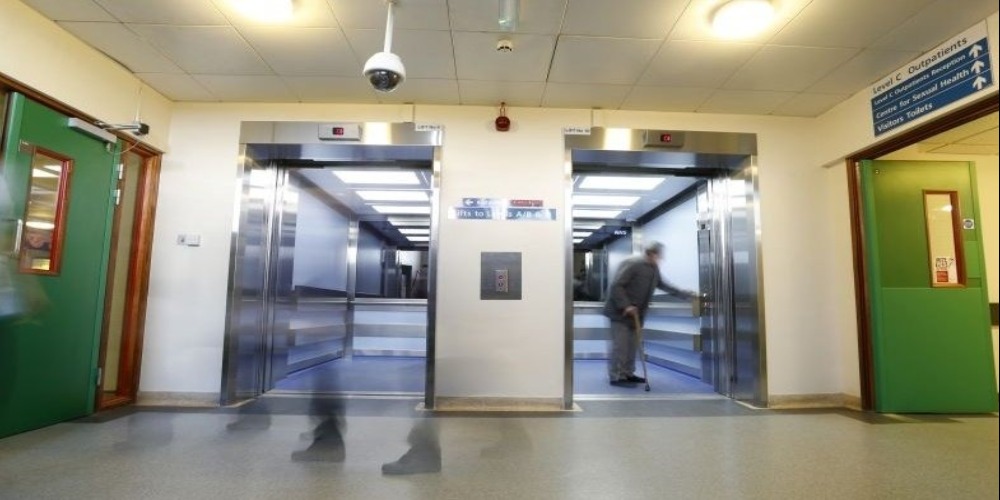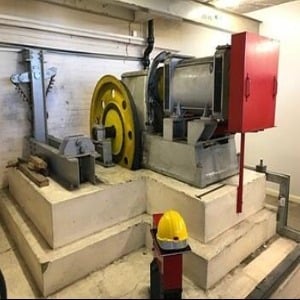The benefit of lift modernisation

An old lift doesn't always need replacing and, in fact, doing so may be extremely difficult due to its design or layout. Instead, you can have a lift modernised. Allow us to explain the benefit of lift modernisation...
Lifts when correctly serviced and maintained can last years! With a longer life cycle than most if not all other forms of transportation. Here at Stannah, it's not uncommon for us to be servicing passenger lifts that are over 30 years old.
However, like any electrical and mechanical equipment, a lift eventually needs to be replaced or thoroughly updated. After many years of use, regular lift maintenance will no longer be enough. As parts wear out, you'll pay more for repairs and it'll get harder to find spares, so your lift may be out of order for a longer time.
Did you know almost half of passenger and goods passenger lifts in use were installed more than 25 years ago? So you can't assume old equipment complies with all current regulations and/or standards, especially if the lift equipment is over ten years old.
During the life expectancy of a building where its use and associated operations might change; so will the lifting equipment in order to better cover the needs of the new occupants. So, a lift refurbishment, upgrade or total replacement of the equipment can happen several times (a bit like Trigger's broom in the TV classic Only Fools & Horses).
Does my lift need modernising?
If any of the following are affecting the performance of your lift its time to consider a modernisation:
- Frequent call-outs and breakdowns, high repair and running costs
- Car finishes looking worn or in need of a modern/fresh feel
- Doesn't comply with the current lift safety regulations
- Noisy, running slowly or draining too much power
How a lift modernisation works...
Lift modernisation involves replacing obsolete components with their modern equivalents. This means new features can be added that were not available when the lift was installed. This results in a newer, safer lift that complies with the latest legislation and standards, offers improved reliability, enhances building flow, and looks nicer!

/lift-modernisation-benefits-after-FEATURED.jpeg?width=300&name=lift-modernisation-benefits-after-FEATURED.jpeg)
Why should I modernise my lift?
There are several reasons to modernise and improve the performance of your lift:
-
Happy building users
If your lift is frequently out of order and relied upon to move between floors, it can quickly become a source of discontent for its users, especially in blocks of flats or retail stores (where it can also affect sales). Improving reliability through modernisation saves complaints!
-
Improved reliability and safety, plus lower maintenance costs
Old, unreliable components may cause a lift to break down regularly, resulting in costs from both periods of downtime and repairing the lift. newer lifts have additional safety standards, protecting both the engineer and passengers. Replacement of components will reduce lift downtime, offering improved reliability and lower running costs and increase safety for all.
-
Enhanced appearance
Whilst the above reasons add value to the lift (and therefore the building) aesthetic improvements can also offer benefits. These might involve re-skinning landing doors, replacing lighting, new lift car finishes, adding CCTV or fitting mirrors within the car.
-
Conforming to the latest standards and regulations
Over recent years, new legislation for disabled access and health and safety has been introduced, affecting those responsible for lifts. A modernisation helps you to comply with the new legislation without the need or cost of replacing the lift.
There are a series of standards and codes of practice for existing passenger and goods passenger lifts that give full guidance:
- BS 5655:2005 Part 11/Part 12 - Code of practice for the undertaking of modifications of electric/hydraulic lifts
- BS EN 81-80:2003 - Rules for the improvement of the safety of existing lifts - provides a framework for upgrading existing lifts to ensure they are equivalent to a modern lift for both passengers and service engineers
- BS EN 81-82:2013 - Rules for upgrading existing lifts for persons with disability - providing guidance and addressing where additional measures may be required to improve the accessibility of the lift and access to each level of the building
- CEN TS 81-83:2009 - Rules for upgrading existing lifts to improve vandal resistance - provides guidance for existing lifts installed in buildings where additional security or other measures may be required to protect against the risk of vandalism, advising protective measures against deliberate acts that may result in equipment damage or personal injury
- BS 7255:2023 - Code of practice for safe working on lifts
Applying these standards enables each lift to be audited to provide corrective actions to improve the level of accessibility, safety and safe-working of an existing lift towards a modern lift equivalent.
Many features can be added to a lift to meet the needs of disabled users, and help the lift to comply with the latest lift standards. For example changes in legislation mean there are now;
- An emergency communication system; to enable passengers to communicate and notify of an entrapment
- Voice annunciators to tell passengers the direction of travel and the approaching floor level;
- Travel direction and current position of the lift car should be shown by in-car and landing digital position indicators;
- Other features include large, tactile and/or braille push buttons and infra-red door detectors.
At Stannah Lift Services, we would always recommend installing an emergency communication system into an existing lift.
-FEATURED.jpeg?width=300&name=lift-modernisation-benefits-before(1)-FEATURED.jpeg)
-FEATURED.jpeg?width=300&name=lift-modernisation-benefits-after(1)-FEATURED.jpeg)
Modernisation Process
The modernisation process is relatively simple although the length of time a modernisation takes is depending on the lift elements being modernised. Broadly the process is as follows:
|
1. Survey, Design & Drawing |
Attend site and carry out the final engineering survey and collate the required measurements. |
|
2. Part Procurement |
Once the finishes and details have been approved all the required parts to complete the project are ordered. |
|
3. On-Site Works |
When parts have been delivered, the site is set up site and works commence. This includes lift removal, building alterations, lift installation, making good & redecoration. |
|
4. Test & Commission |
Once the works have been completed, the lift is tested to EN81-20 (where applicable). |
|
5. Handover |
When the test has been completed and witnessed by the client/consultant, the lift is handed back over to the client. |
|
6. Defects Liability Period |
The defects liability period commences once the lift has been handed over to the client and is in full working order. |
What type of adjustments can be expected?
Lift modernisations come in all shapes and sizes, from:
- Component upgrades - a quick and cost-effective way to make small improvements to your lift. These upgrades include items such as fitting a handrail; installing a mirror to help wheelchair users negotiate entry and exit when turning space is limited; installing a floor position indicator or a voice annunciator.
- Systems modernisation - improving the performance of your lift by updating entire systems, for example, the emergency communication devices, electrics, door operators or door systems.
- Full replacements - completely removing your old lift and installing a brand new one in your existing lift shaft.
How can Stannah help?
Health and safety are increasingly important in all our lives. Lifts, particularly older ones, can benefit from modern technology by incorporating more sophisticated safety devices, offering benefits to building owners, lift users and service engineers alike.
A reputable lift service provider, like Stannah, will understand what you want out of your lift modernisation, as well as the likely costs and benefits and manage the lift modernisation from start to finish.
Click here to download your FREE guide to lift servicing and maintenance.
With over 50,000 installations across the UK and nearly 100,000 units in our service portfolio, we offer a wide range of lift solutions and services to move people and goods. Take a look at our product range or simply get in touch.
Contact Us
